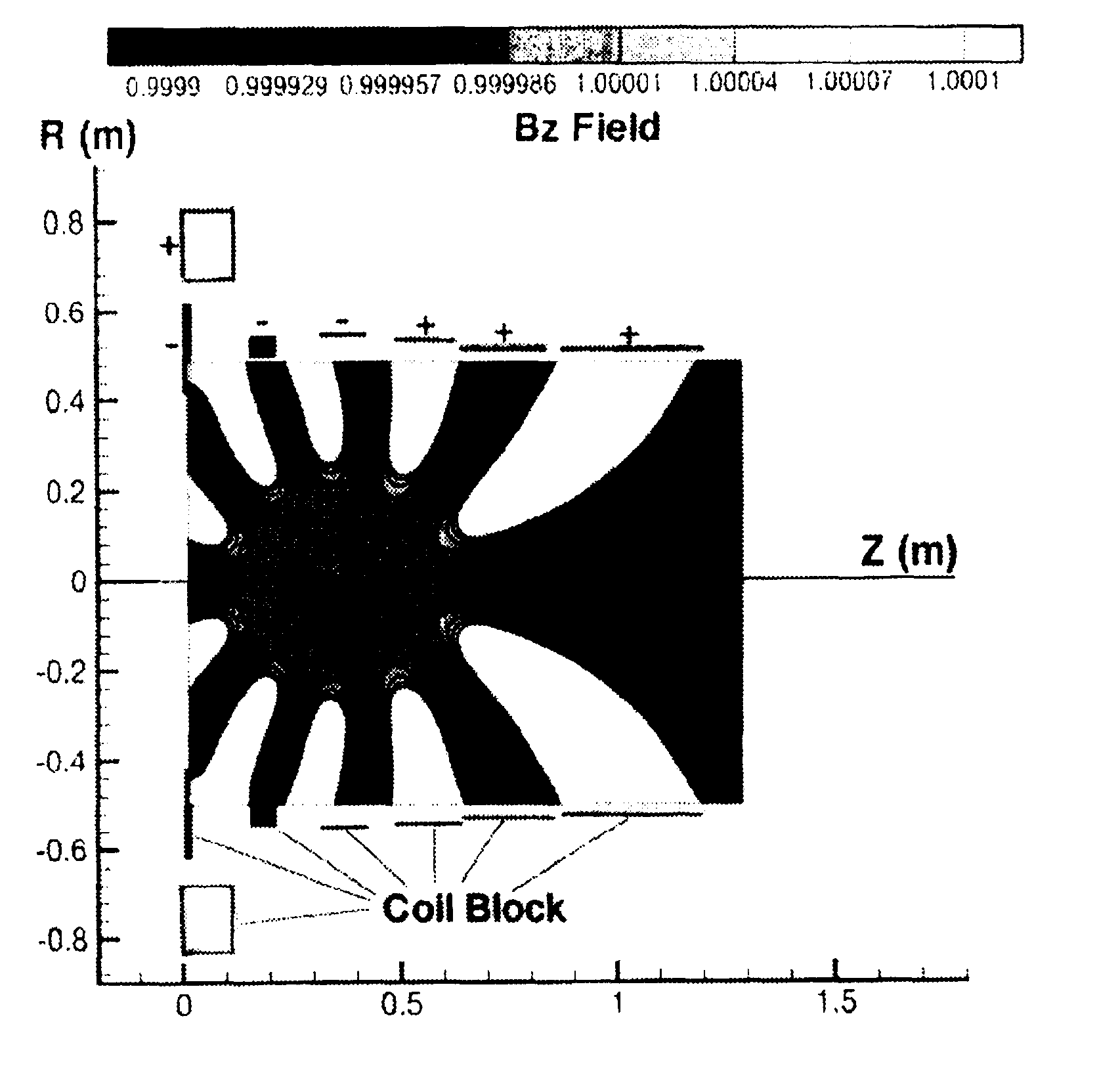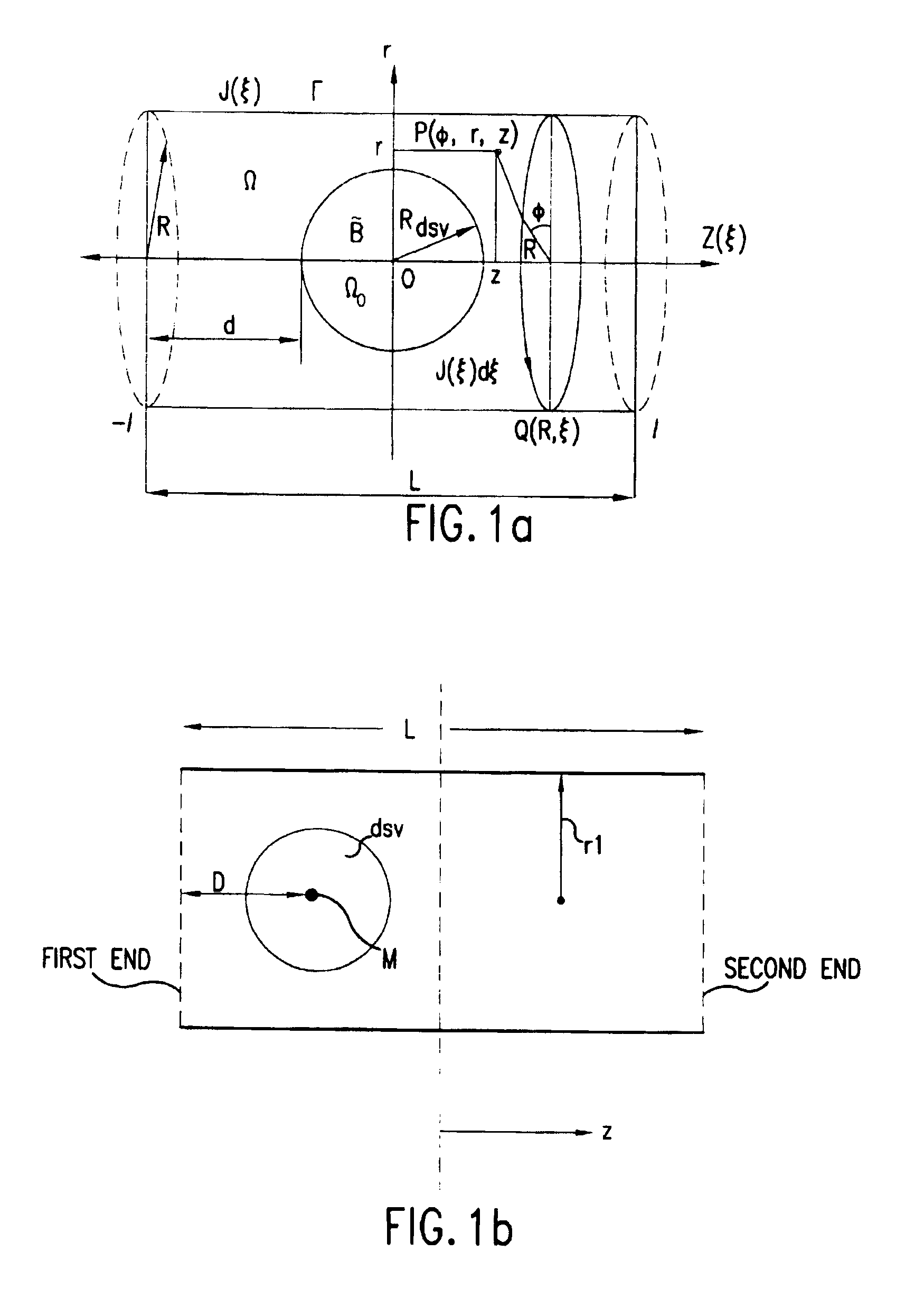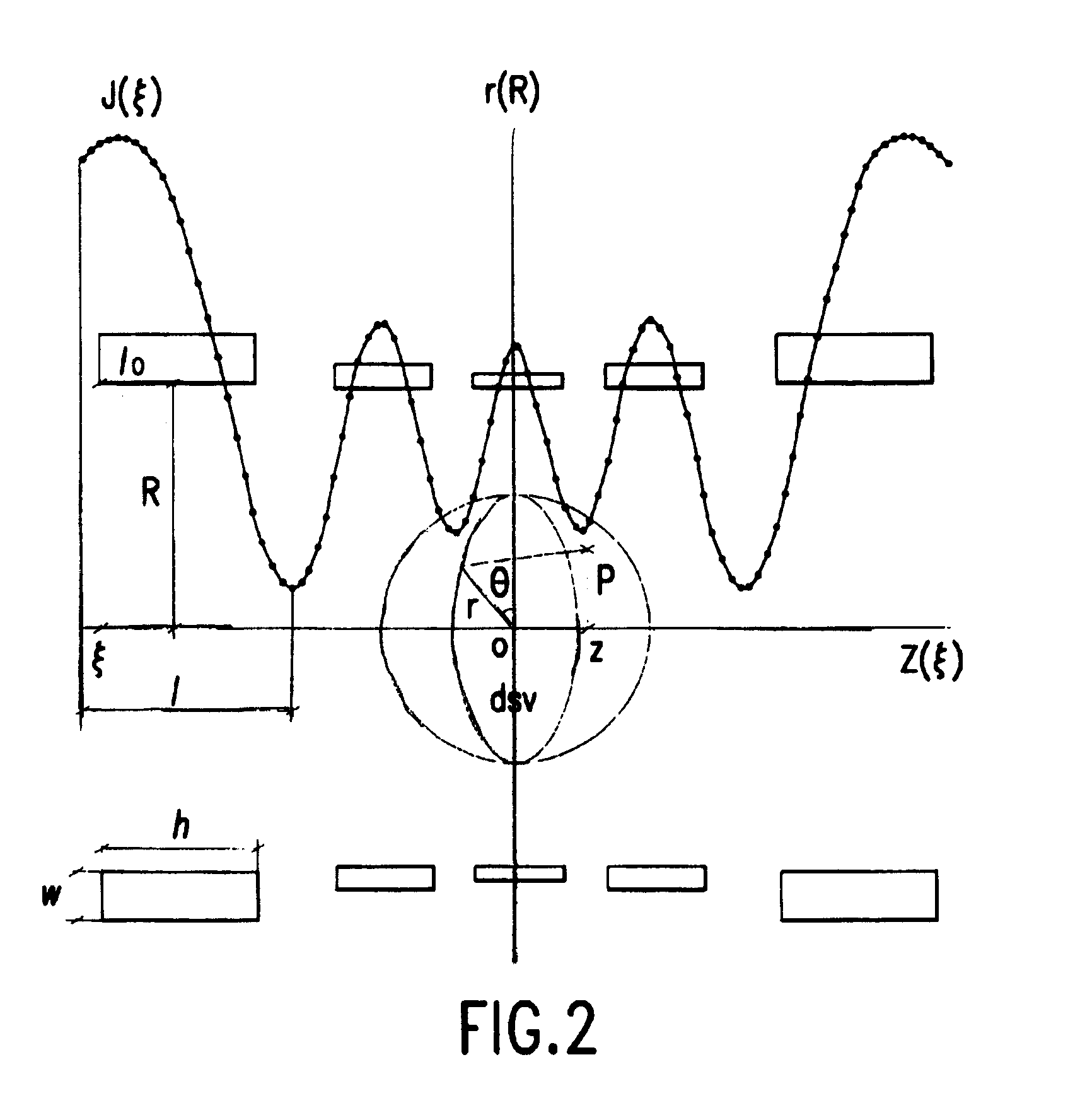Asymmetric superconducting magnets for magnetic resonance imaging
- Summary
- Abstract
- Description
- Claims
- Application Information
AI Technical Summary
Benefits of technology
Problems solved by technology
Method used
Image
Examples
Embodiment Construction
[0071]As discussed above the present invention relates to asymmetric MRI magnets and methods for designing such magnets. The design technique involves two basic steps: (1) use of a current density analysis to obtain a first estimate of coil locations, and (2) use of non-linear optimization to obtain a final coil configuration. For ease of presentation, the method aspects of the invention are discussed below in terms of a single current density layer, it being understood that the invention is equally applicable to, and, in general, will be used with multiple current density layers.
[0072]FIG. 3 illustrates the overall numerical procedure of the invention with reference to the various equations presented below.
I. Current Density Analysis
[0073]In general, the structure of a clinical MRI magnet comprises an air-cored coil. The first step in the method of the invention is to find a source current density which is constrained to the surface of a cylinder of fixed length. In particular, a c...
PUM
 Login to View More
Login to View More Abstract
Description
Claims
Application Information
 Login to View More
Login to View More - R&D
- Intellectual Property
- Life Sciences
- Materials
- Tech Scout
- Unparalleled Data Quality
- Higher Quality Content
- 60% Fewer Hallucinations
Browse by: Latest US Patents, China's latest patents, Technical Efficacy Thesaurus, Application Domain, Technology Topic, Popular Technical Reports.
© 2025 PatSnap. All rights reserved.Legal|Privacy policy|Modern Slavery Act Transparency Statement|Sitemap|About US| Contact US: help@patsnap.com



